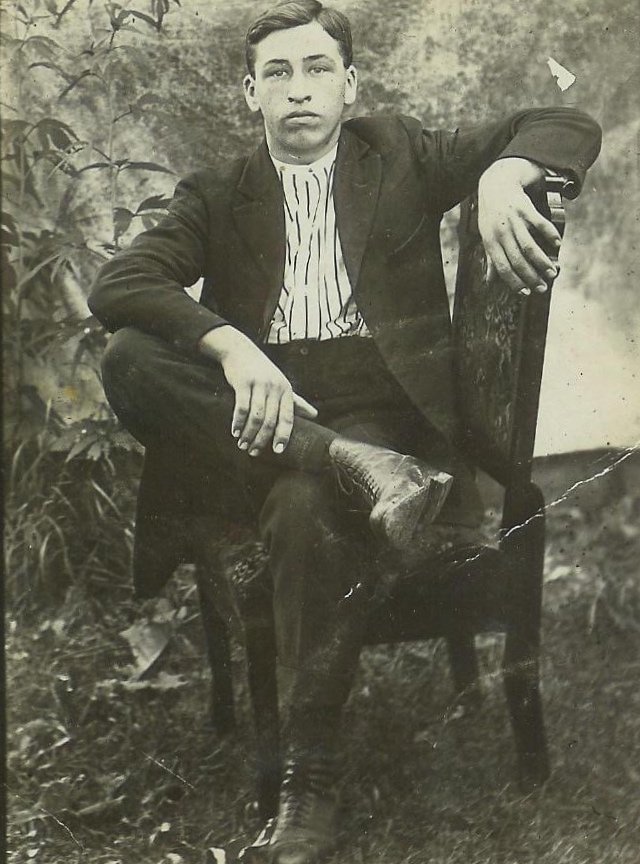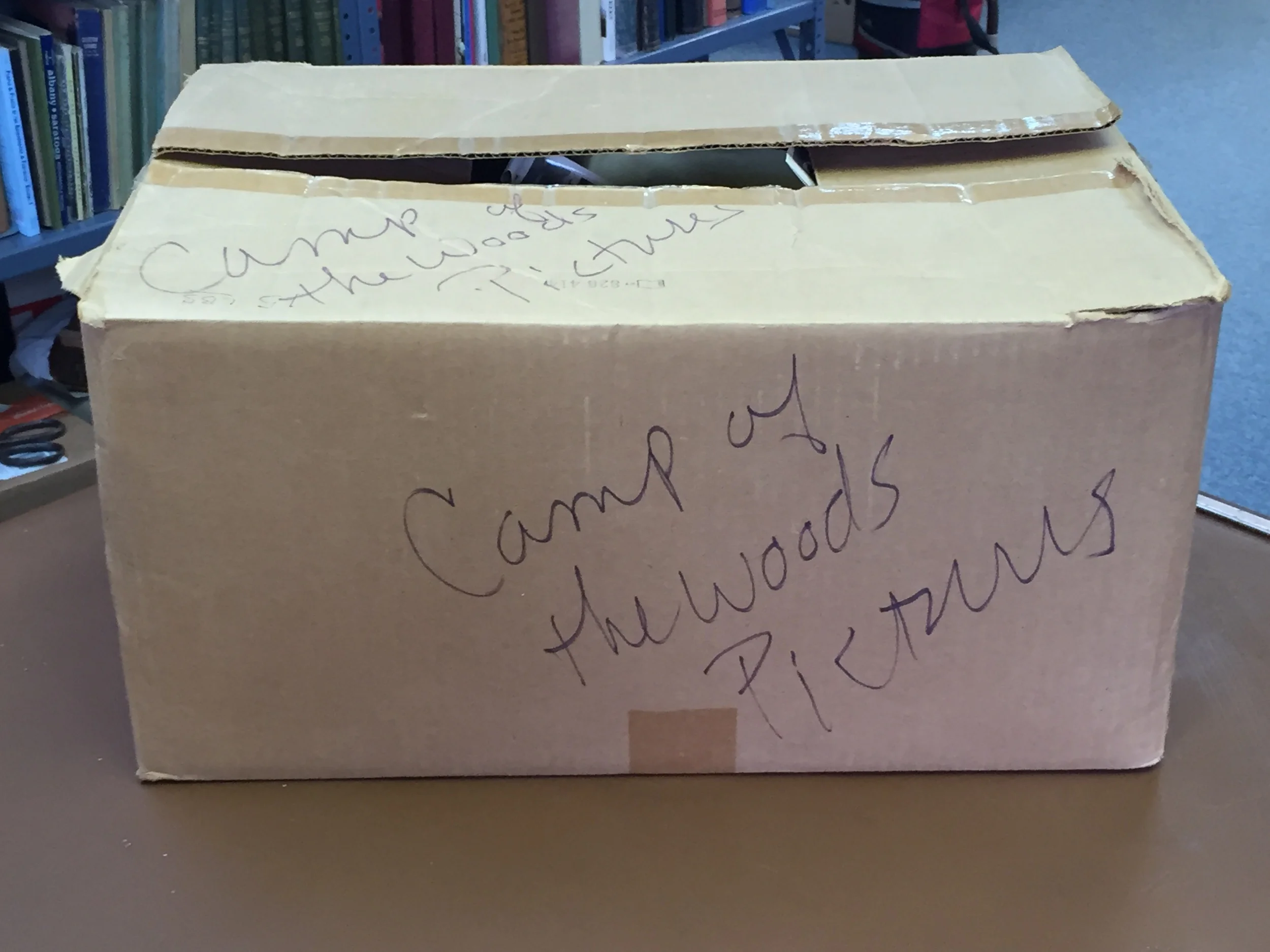So, here’s my box. Sure enough, it says Camp of the Woods on the outside, and sure enough, there’s the Tefft mark right on a top photo. Doesn’t look too daunting, does it?
My first step is to get organized. I haven’t ordered any housing or other materials (beyond cotton gloves; see below) because I’m not yet sure what I’ve got, so let's unpack this baby so I can figure that out. For history nerds [raises hand, bounces in seat], this is kid-in-a-candy-store stuff.
Ooh. Below the top layer of loose photos, there's a smaller file box of photos organized into some sort of system, plus developer envelopes, some containing loose photos, some containing negatives. Some of the envelopes have notes on them, so I’ll avoid separating them from their contents. Some are clearly multiples. Some have been printed as photo postcards (that may help somewhat with dating, as this great resource from the Smithsonian explains) or greeting cards. While nothing is damp now, the box has probably been exposed at some point to moisture. Some of the photos are stuck together, and some of the negatives are stuck to their sleeves. More than a few are severely curled at the edges:
Here's what the whole kit and caboodle looks like, and this is why it's a good idea to set aside as much surface area as possible for your project:
The first order of business is triage, then sorting. First, I'll separate out the ones which require conservation, like the poor curled item above. Next, I'll sort the loose photos (sans envelope or box) by size, setting aside any duplicates. Finally, I'll make a survey of the envelopes and the box. Here's my result:
Postcards: 68
Photos 3.5"x5": 115
Photos 5"x7": 58
Miscellaneous sizes: 20
Envelopes: 111, some with multiple photos and/or negatives
Boxed photos: 103 files, some with multiple discreet photos
Damaged photos: 120 [that's an estimate; some I can't pry apart to count]
Based on this, I'm looking at housing at least 600, and possibly as many as 800 items, of which about 10% are negatives. But before I go any further, I'd like to know more about provenance. The more I look at this collection, the more I wonder if it came from Tefft studios rather than from Camp of the Woods:
Since the Teffts and their work were as much a part of Hamilton County history as their subject matter, the internal file box, envelopes and notes may be worth preserving in and of themselves, along with their contents. And in any event, I can't imagine handling the work of Arthur and Lila Tefft, to whom we owe a great debt for the preservation of so much Hamilton County history, with anything but profound respect. Next week, I'll inquire around the county building to see if anyone can recall when this box came in, and who brought it.
In the meantime, we haven't encountered any real technical questions yet, save perhaps one:
Q: Did you wear cotton gloves to handle this stuff? Should I?
A. Give the potential damage done by touching historic materials with bare hands (and thereby transferring whatever is on your hands to the materials), you might think the experts would give an unequivocal “yes” to this question. I was surprised to find in my reading that this is not necessarily the case. If your photos are in reasonably good shape, that is indeed the answer. However, gloves have the disadvantage of making your hands a bit clumsier when handling delicate material like paper, and also they prevent you from feeling whatever you’re handling. If there is a chance you might cause even more damage to an historic item because you can’t feel the material properly through the gloves, then you might want to rethink that.
Best Option: Have some cotton gloves on hand (they’re cheap), and use them when there is no danger of damage in handling. If you must handle photos with bare hands, wash and dry them thoroughly first and skip the lotion.
Until next week, I'll leave you with this photo of CoTW founder Pop Tibbitts, found in reasonably good shape in the box of goodies:







